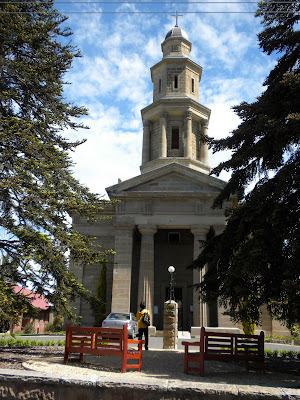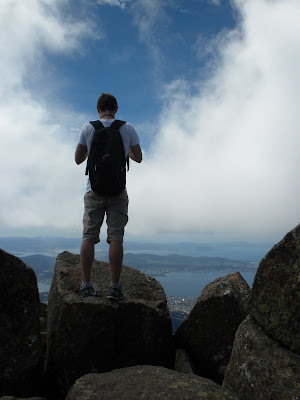The Roaring Forties is the name given to the band of mostly sea that lies between forty and fifty degrees south. If you look at the map below, you'll see that the tip of South America, the South Island of New Zealand, and Tasmania are the only large bits of land in that band. Sailors coined the name because of the winds that roar around that latitude in the Southern Ocean. (We wouldn't want to forget the Furious Fifties and the Shreiking Sixties, but mercifully, we don't live there. New Zealand owns a few islands between us and the Antarctic, and the weather there sounds like it is amazing.)
Because there is so little land mass in the Southern Ocean, the winds are not impeded by very much. They swirl and shift around Antarctica, giving the Southern Ocean some of the roughest seas on earth. In recent months I've come to realize how significant these winds are for our weather on the east coast of New Zealand's South Island.

Our daily life is dominated by shifts in the wind, which bring radically different weather. In the past week we've had daily highs in the 50s, 60s, 70s, and 80s. (Remember it's summer here.) On December 20, the day before the summer solstice, we had amazingly strong cold winds, rain and hail. The next day I asked a kiwi if he had heard how strong the winds were the day before, and he said he hadn't paid much attention, because they seems pretty average to him. On Christmas Day, it was calm and almost 90 degrees., the warmest Christmas anyone can remember.
The winds seem to contribute to the abundance of micro climates, which depend on hills that block the wind in various places. And the weather can change in an hour or two quite dramatically. You never know how to dress. "Layers," all long-term Dunedinites say.
.jpg)
.jpg)
.jpg)































.jpg)
.jpg)
.jpg)
.jpg)







.jpg)
.jpg)







